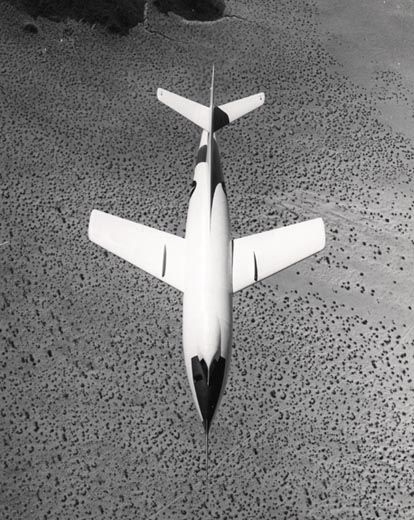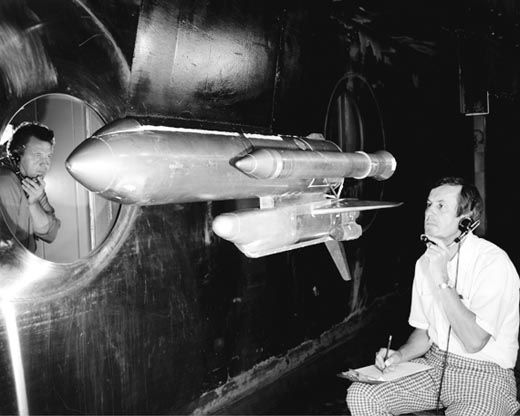Moments and Milestones: Unknown Unknowns
Moments and Milestones: Unknown Unknowns
/https://tf-cmsv2-smithsonianmag-media.s3.amazonaws.com/filer/Arch_Moments_Main_SEP09.jpg)
If we could discern in the history of inventions a pattern that consistently leads to success, we could predict the next big thing and all be millionaires. But the moments of inspiration leading to milestone achievements in aviation and space exploration occur in all sorts of circumstances. Some inventions that have had the greatest impact in aerospace were simply imported from other fields. Orville and Wilbur Wright, for example, affixed airfoils to a bicycle in 1901 and cruised Dayton’s streets to figure out lift and drag. But they couldn’t collect meaningful data until they found a way to control the conditions. Luckily, 30 years earlier, marine engineer Francis Wenham had invented the enclosed wind tunnel. Possibly influenced by his work, the Wrights built their own wind tunnel, a small wooden box with a glass top through which they could view the effect of airflow on various shapes they called “balances.” Aerodynamicists have used wind tunnels ever since.
Some of the greatest aeronautical inventors have been, like the Wrights, intuitive engineers without much formal training. Robert T. Jones, a self-taught aerodynamicist at the National Advisory Committee for Aeronautics’ Langley Laboratory in Virginia (the college dropout was a former elevator operator), discovered the aerodynamic advantages of swept wings in 1945. While one in-house review dismissed Jones’ theory as “hocus-pocus,” wind tunnel tests proved its validity.
Shortly before, the highly trained aerodynamicist Adolf Busemann had presented a similar theory. The Nazi war machine put the concept into development, and part of the spoils the United States gained from World War II was Busemann’s research. (The buildup to war also contributed to the invention of the jet engine, another technology that appeared in two countries almost simultaneously.)
Great inventions are sometimes unintended consequences of unrelated research. The Hubble Space Telescope has given us the most detailed look yet at the farthest galaxies in the universe, and part of its success is due to the use of charge-coupled devices (CCDs), which convert light energy into electric charges enabling the telescope to record multiple levels of light and dark. Invented in 1969 by Willard Boyle and George E. Smith of Bell Labs, the CCD was developed to improve video telephone technology.
Though many a great gadget has come from a solitary inventor, others require vast government-funded partnerships. In 1992, the National Aeronautic Association presented its Collier Award to the GPS Team, the U.S. Air Force, the Naval Research Laboratory, the Aerospace Corporation, Rockwell International, and IBM Federal Systems . A small Department of Defense program spawned the Global Positioning System, which proved its worth in the 1991 Gulf War. Today civilians worldwide enthusiastically embrace the navigation system, with the U.S. military accounting for just a small part of the GPS market.
They came to us in different ways, but take away any one of those five inventions—the wind tunnel, swept wings, the jet engine, charge-coupled devices, and the Global Positioning System—and the world would be a much less interesting place.

